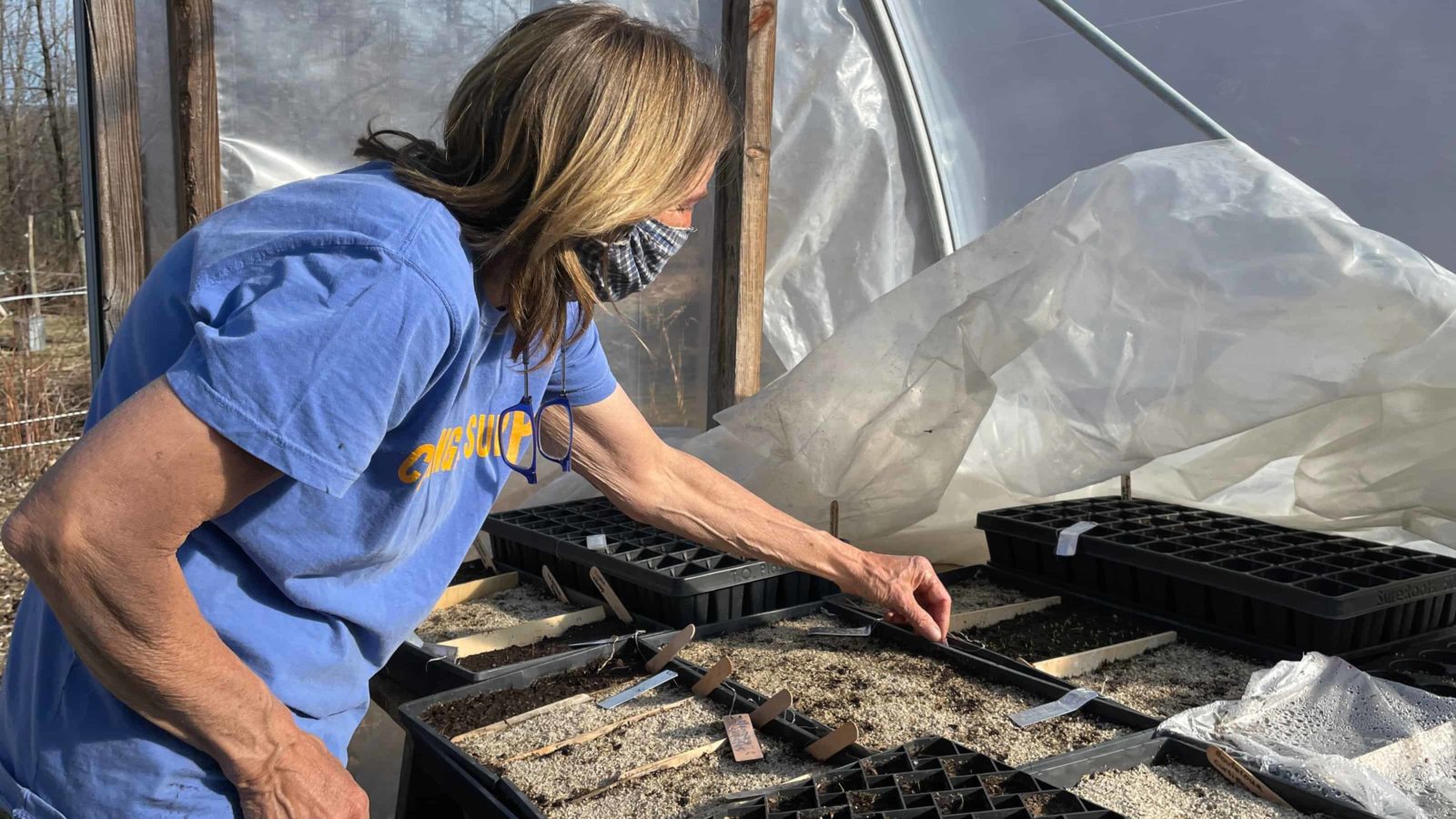Shake out a handful of seeds from a paper bag labelled by hand. Each kind is a different shape, a fiber surrounded in soft down, or a golden-brown fleck, or a sleek husk. Press two or three into each cupful of earth. When the tray is filled, some will need a cover of soil to protect them or sand to let the light through.
It’s warm in the hoop house on a sunny April afternoon, and Amy Pulley is planting seeds she has gathered at Wing and a Prayer, her native plant nursery in Cummington.
In last season’s flower beds, dried stems stand straw gold. She doesn’t cut them back until the pollinators come out, she said, and she will leave some of the stalks standing even then. She shows a string of holes along a stem half an inch wide. Larvae will shelter in the stems as they transform into carpenter bees, she said, and woodpeckers come after the larvae.
Carpenter bees are powerful pollinators for wildflowers, milkweed that will feed monarch caterpillars, tomatoes and eggplants and more. They have a depth of skills beyond the tunnels they make to keep warm — they can follow ultraviolet patterns on flower petals to find nectar, and they hum in the chest, vibrating strongly enough to urge the pollen from a flower’s anthers, the tips of the stamens (tendrils at the center).
This spring Pulley started to cut a stem and found the chambers still had larvae in them, so she will let the rest be until the bees emerge.
“There are a lot of stem-nesting pollinators,” she said, including many smaller bees. “I’m just learning them by watching.”
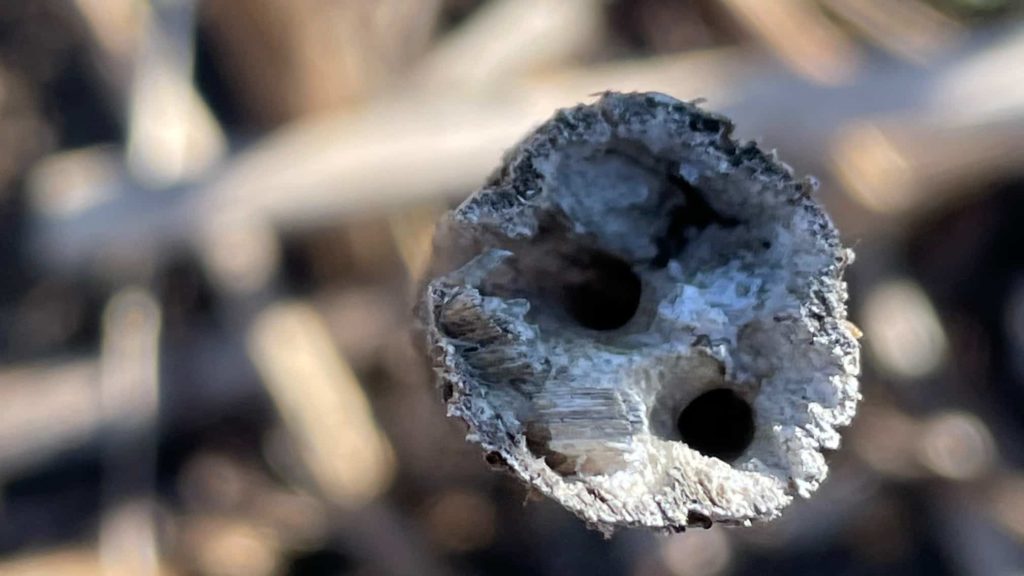

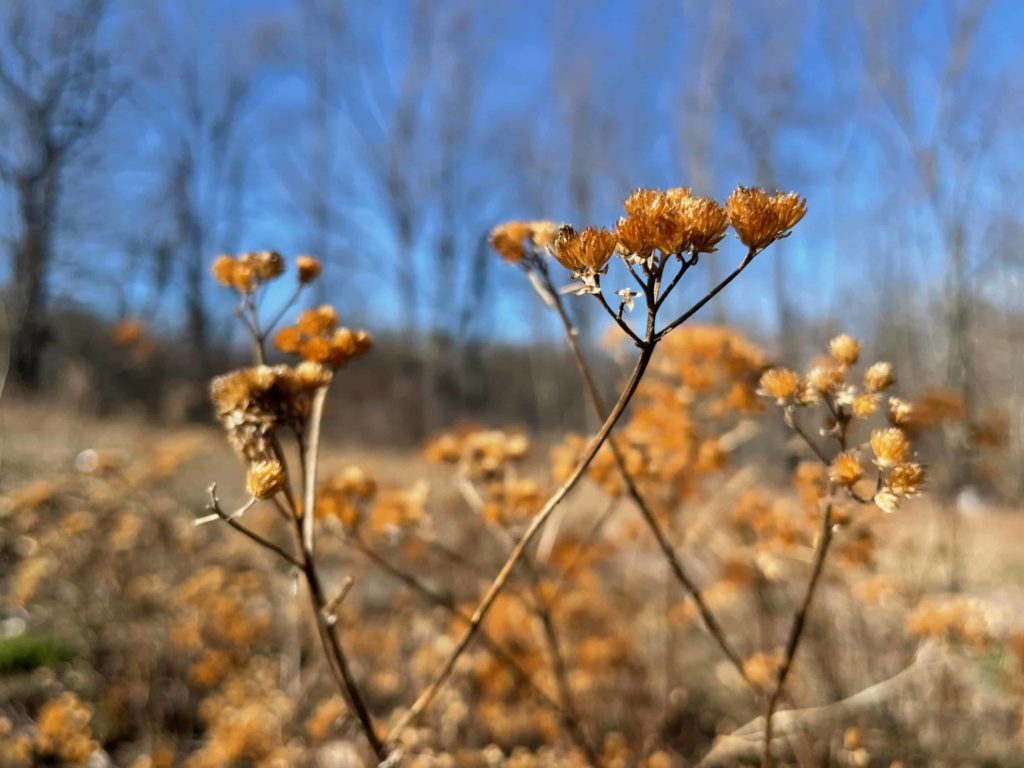
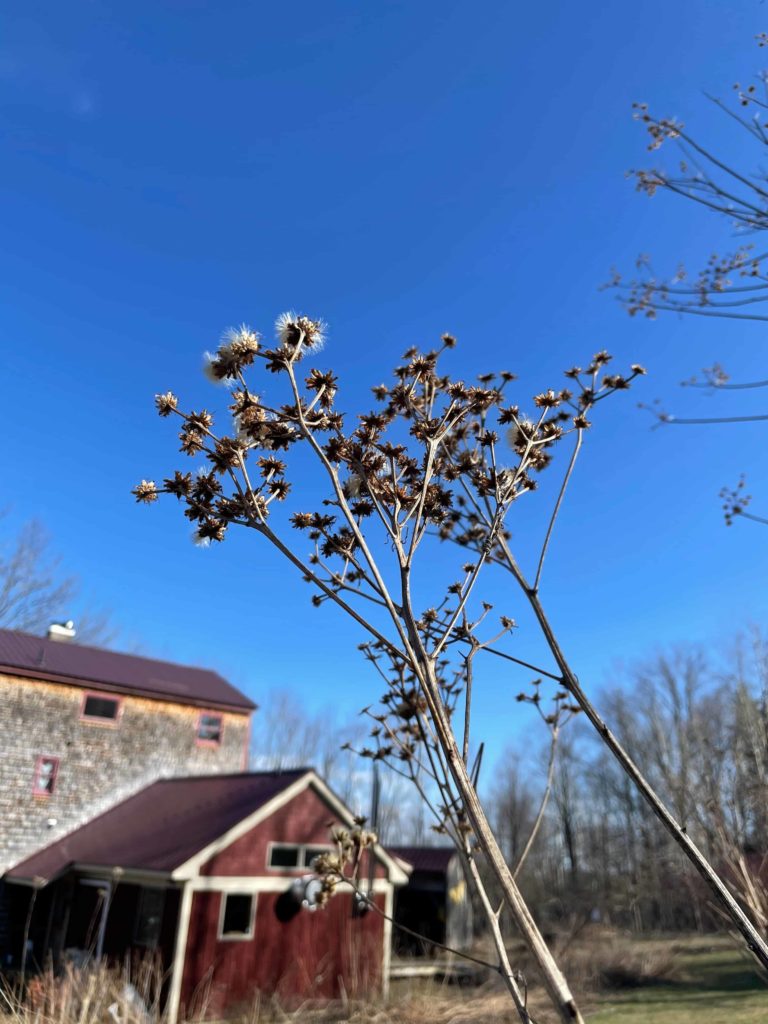
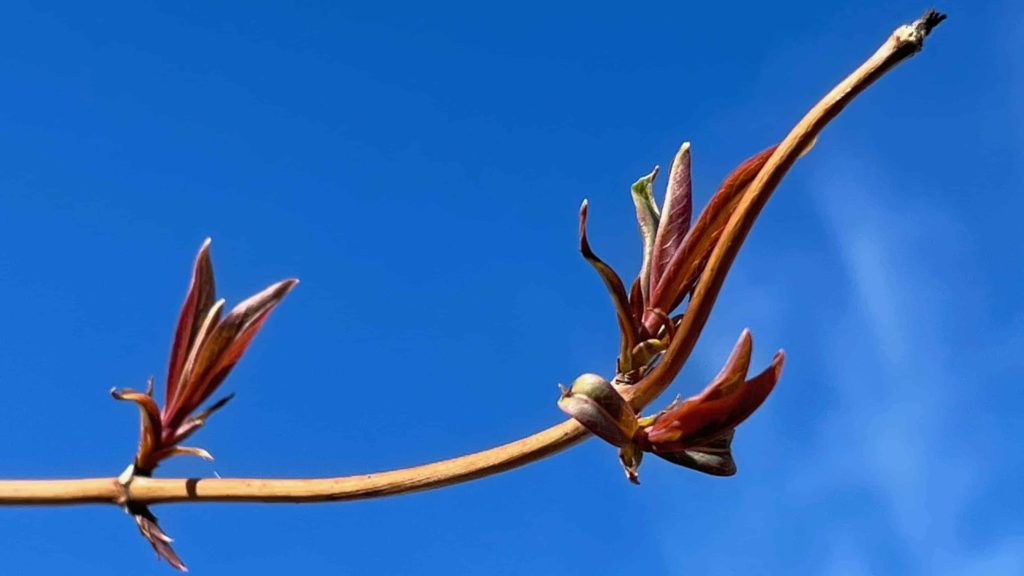
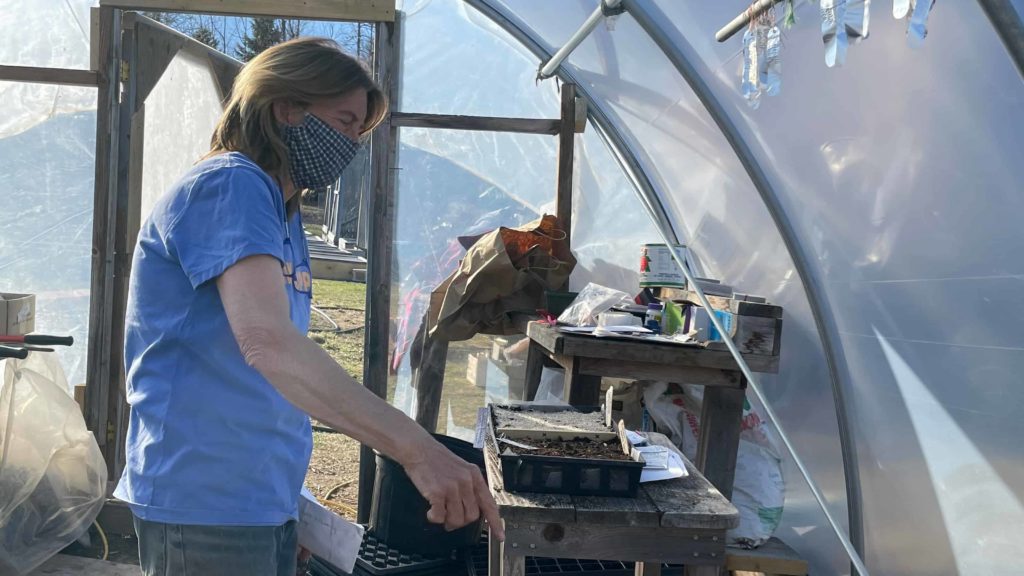
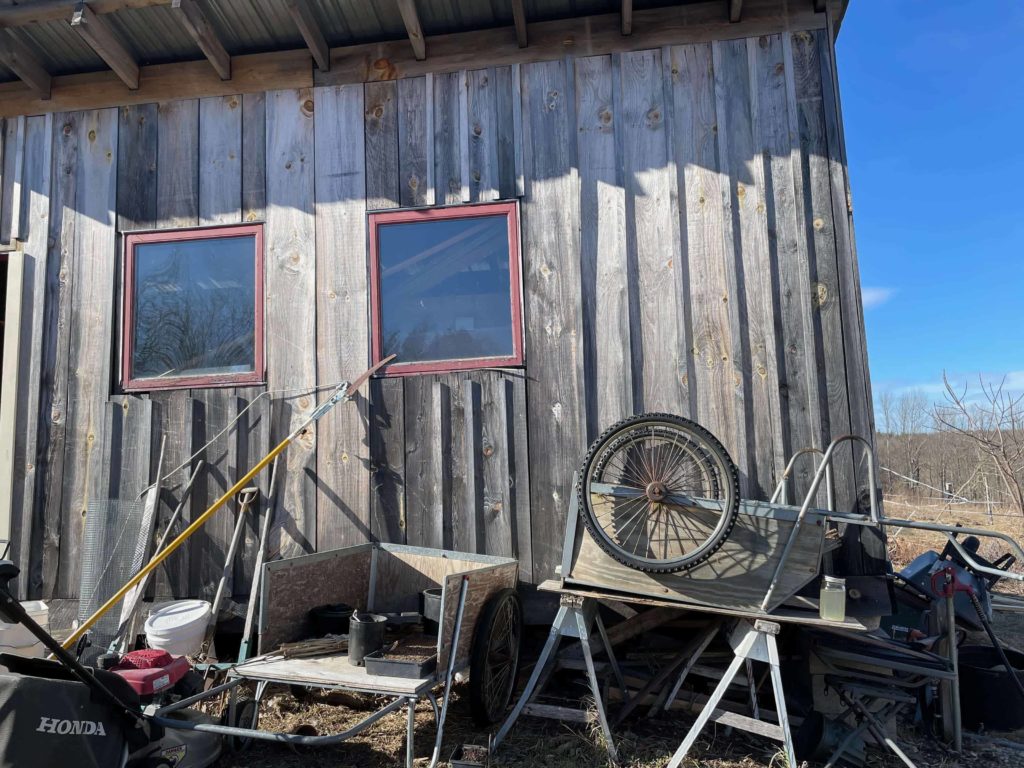
She is preparing for her seventh warm season at Wing and a Prayer, in the homestead where she and Alice Cozzolino grow more than 300 kinds of vegetables and herbs, and fruit trees, berries and nut trees.
They came here in a time of transition, she said. They owned the Old Creamery co-op market nearby for 12 years. It was an intense job to keep the place going, a 24-7 job, but a lot of fun. In the year after they sold it, they considered their next steps.
“Alice said ‘I want to build a kitchen, and I want to cook,’” Pulley said, and now she does — as a chef for more than 30 years, she has created a program of community sponsored food on a model much like community sponsored agriculture (CSA) farms, serving meals to local families on a 10-week cycle.
Pulley started a garden. She began gradually, she said. In her first year, she had three wooden boxes for overwintering her plants — Most native plants spread their seeds in the fall and have evolved to need the cold, quiet months of winter, for the seeds to ease open and germinate in the spring.
Even in that first year, she was astonished at how many butterflies she saw, butterflies she had never seen before. She wanted to encourage songbirds and helpful insects too, and they need food and water and places to nest.
“I put in a small garden, and I said ‘this is not enough,’” she said.
She set out to learn more, by getting out and getting muddy, trying plants in new places, reading online and walking through her fields. And as she expanded her own garden, she has grown a plant nursery and a community and inspired a network of gardens across the state.
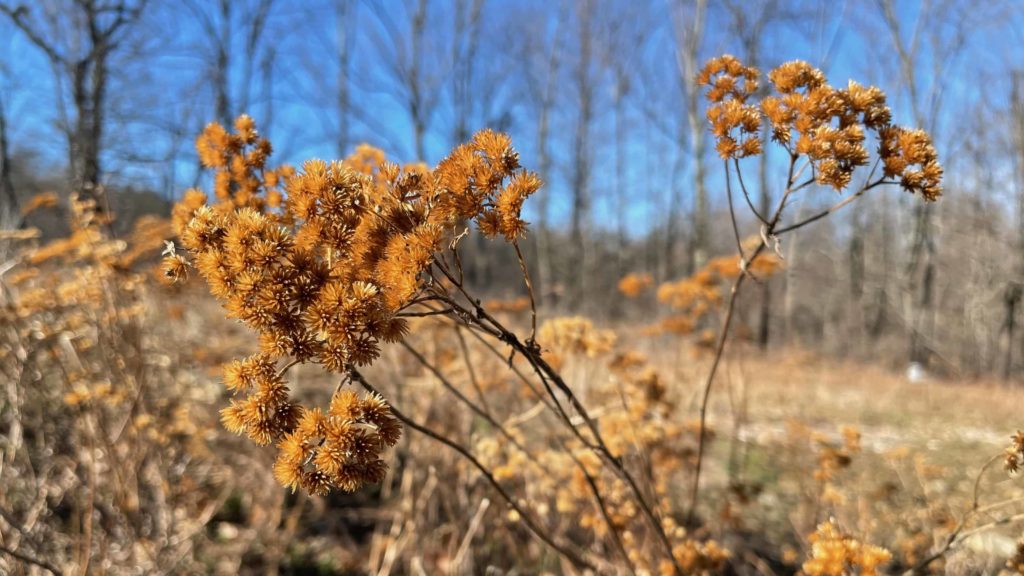
Last season's flowers have dried golden in the gardens at Wing and a Prayer native plant nursery in Cummington.
She had about 350 plants in the first year, she said. Now she has 45 overwintering boxes. Since last September she has planted some 40,000 seeds.
She planted many in the fall and some in February and March, and the latest in the last few weeks. Not every plant needs as much time in the cold, she said.
Her plants spend the winter in their pots and trays outdoors in wooden frames like the boxes for raised beds, with screens to protect them from voles. When the season opens and she begins to set out the young plants, she will have to keep an eye on them, she said. She may have help — she has seen barred owls here in the last two weeks.
She grows 95 percent native plants, she said, and she encourages as much diversity on her own land as she can. She has put back native trees and shrubs and perennials, and she is restoring a stretch of hedgerow with berry bushes, blackberries and blackcaps, purple-flowering raspberries, spyria alba and native roses.
It can take time to learn what plants like to grow on her land and where they want to be.
“It’s an ongoing relationship,” she said. “(Plants) move around and change. It’s never done.”
She loves that learning.
“You can have a neat garden, but I tell people, don’t miss the playing,” she said. “Find a plant you like, plant 20 and see what happens. It’s a whole living system that’s going to change and evolve.”
‘I tell people, don’t miss the playing. Find a plant you like … and see what happens. It’s a whole living system that’s going to change and evolve.’
She has learned by trying, setting out seeds to see what comes up and what happens to them. She planted tall clusters of New York Ironweed with its broad, round stems and saw that in every stem she left in place, the bees would come back, and they were tiny and wonderful.
She began to teach what she was learning in her garden and in her research. She read Douglas Tallamy’s book, Bringing Nature Home, she said, she and began to understand how critical pollinators are.
“Without them, we wouldn’t have 85 percent of our flowering plants,” she said, including trees — not only fruit trees and nut trees, but maple, beech, birch, all of the trees growing catkins and new leaves in the spring. They all flower and grow from seeds. (This far north, only evergreens do not.)
Its a living system, and elements relate in subtle ways. Plants need bees as pollinators to make new fruits and seeds, to make new plants, and bees also need pollen as a food source, to have the energy to make new bees.
Pollinators need places to nest in spring and summer and shelter in the winter. They need water to drink, and they need different kinds of food at different times — caterpillars may eat only one kind of leaf, and butterflies and moths need nectar.
Nectar itself comes in many containers. Different kinds of bees with long or short tongues can drink from different kinds of flowers. Butterflies can drink from flowers with a long tube, and hummingbirds like flowers with recurved petals so the birds can hover and sip. The plants and creatures have relationships.
“Snapdragon flowers,” Pulley says on her website, “will only open if stepped on by a bee of just the right weight.”
And relationships build on each other. While plants are feeding caterpillars, caterpillars feed birds.
“Trees and shrubs do heavy-duty work in feeding caterpillars,” Pulley said, walking through her fields. “Some oak trees will host between 400 and 500 species of caterpillars — and it takes 6,000 to 10,000 caterpillars to feed a clutch of baby chickadees from the time they hatch to the time they fledge.”
Different kinds of caterpillars emerge at different times, she said, so those baby birds need many kinds of caterpillars to keep them going.
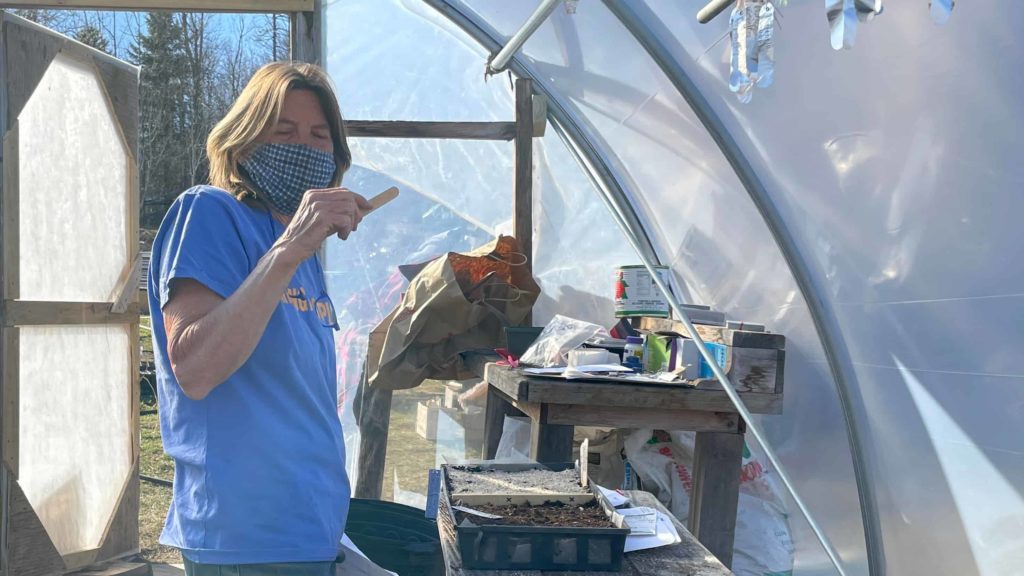
Amy Pulley plants native seeds in her tunnel house at Wing and a Prayer native plant nursery in Cummington.
A healthy landscape, a healthy habitat, is a connected web of trees and wildflowers, birds and benign insects — and these places are increasingly gone, even in a place that looks as green as the Berkshire hills. More than 80 percent of the planet is no longer wild, Pulley said.
“We’ve taken so much habitat away.”
Once she began to understand how significant the situation is, she began to coordinate efforts far beyond her hilltop. She began working with Western Massachusetts Pollinator Networks, and she began to teach.
At first she met skepticism. Her father did not fully understand her work, she said, until she planted a butterfly garden for him, and he found he loved to sit outside and watch the swallowtails and fritillaries.
In the beginning she did more speaking, she said. In her first three years with the nursery, she often found herself explaining to people who would ask why native plants and pollinators matter. Now, while she is always happy to talk, she finds more people come to her with an understanding, at least an interest.
‘Without pollinators, we wouldn’t have 85 percent of our flowering plants.’
They talk with her as they walk through her plants for sale, asking what wildflowers will go well with each other, or what will grow well in the land they tend.
“I like to see people have that relationship with a plant,” she said — “‘I’ve chosen this one,’ for whatever reason — because then you know people will pay attention.”
She finds herself growing a network of people who volunteer to work with her, from a group of local elders to a recent college grad, a philosophy major who has helped her in this last uncertain year and loves the time he spends with plants and wants to go on.
“It’s healing for the human who gets to do this,” she said, “to watch the life come and watch the plants grow.”
Last year she started a CSA for plant seedlings, and it filled up quickly — people would come with research, lists of plants. They had been studying.
She encourages people to start their own seeds. (With a little time and care, she said, a packet for $3 can become 150 plants.) She loves the idea of an exchange, of people sharing enthusiasm and working together.
She has talked with people interested in opening their own native plant nurseries and she hopes to see more opening in the next five years.
“The demand is there,” she said. “I can’t grow a tenth of what will be in demand this year.”


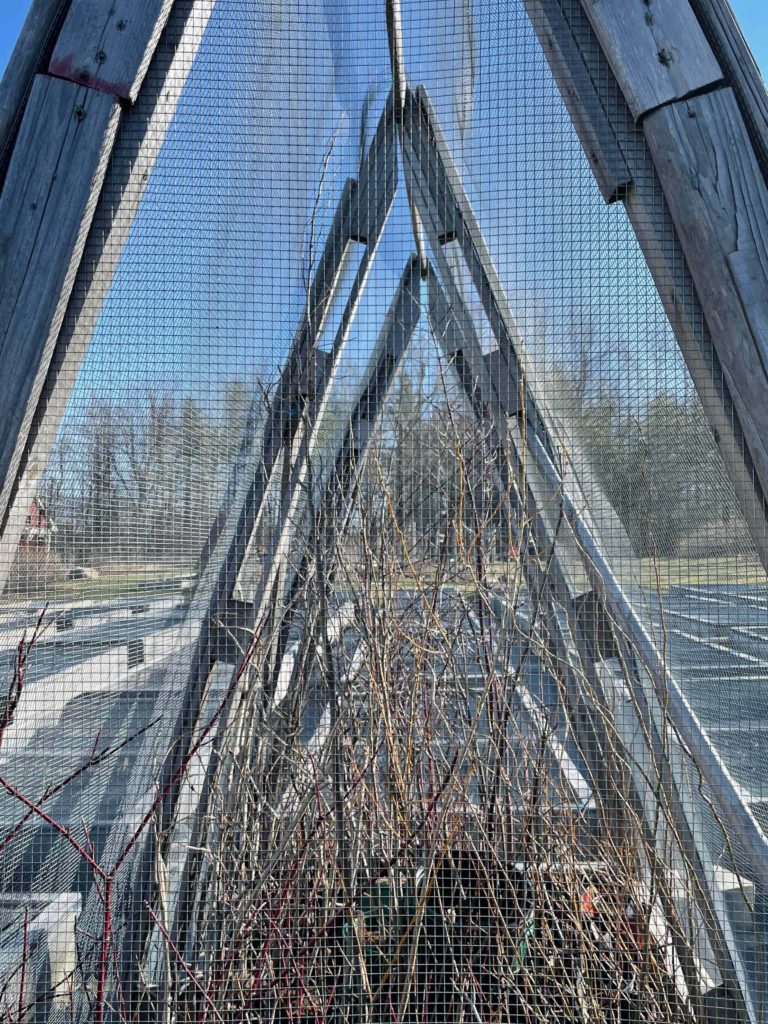
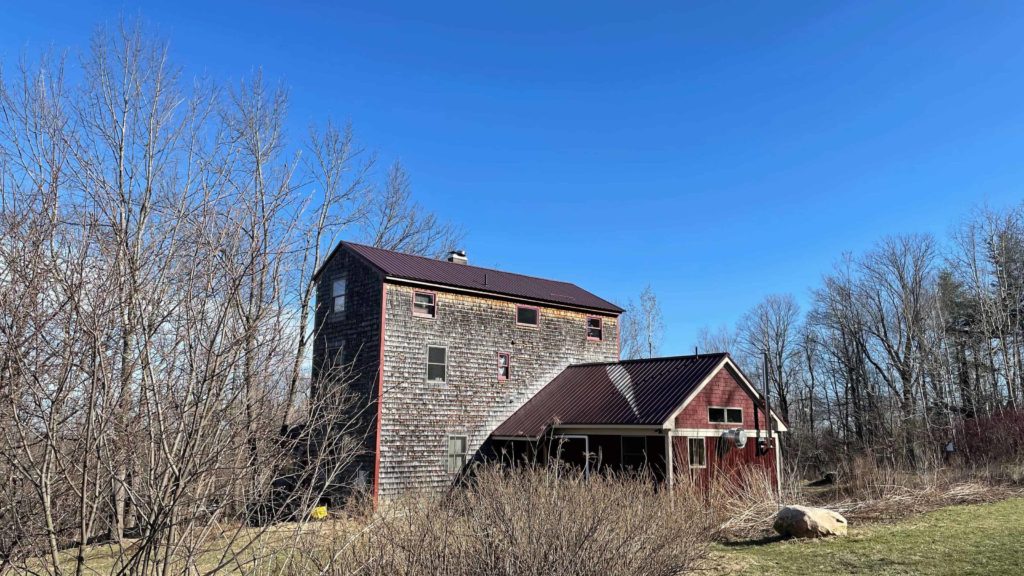
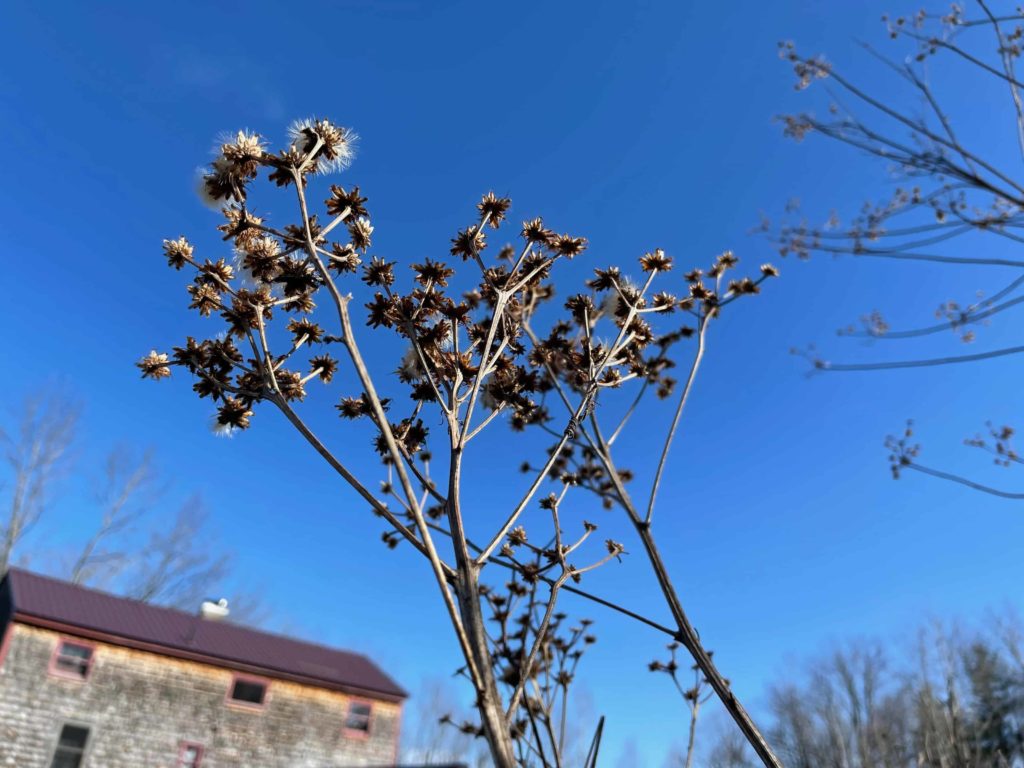
She sees the movement putting down roots. Families have planted more than 1070 pollinator gardens in homes across the Berkshires, Greenfield and Northampton, and now towns are joining in.
Great Barrington has become the first to pass a pollinator resolution, and about 14 more towns and communities have followed, as Great Barrington has brought in landscape designers to make a townwide plan for pollinator habitats in public spaces.
The effort is deepening across the state, she said. And while she sees stiff challenges in the changing climate and the widespread use of pesticides, by its nature, it is a movement looking into the future.
In her own fields she has planted river birch, imagining a picnic grove here in 15 years.
“I love watching things grow,” she said.
In a wide field, on the a bare sandy mound where she and Alice have put in a sceptic system, she has planted a garden of sweetgrass and plants for butterflies, native grasses like bluestem and carex, and wildflowers, penstemon digitalis, asters. She will make space here too for bees, she said — 70 percent of native bees nest in the ground.
She looked across the deep gold of dried flower clusters against a blue spring sky.
“I want people to fall in love,” she said. “I want people to fall in love with the world — as we still have it — while we still have it. And then maybe they’ll do something to help.”

